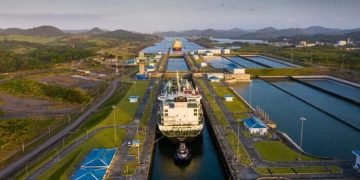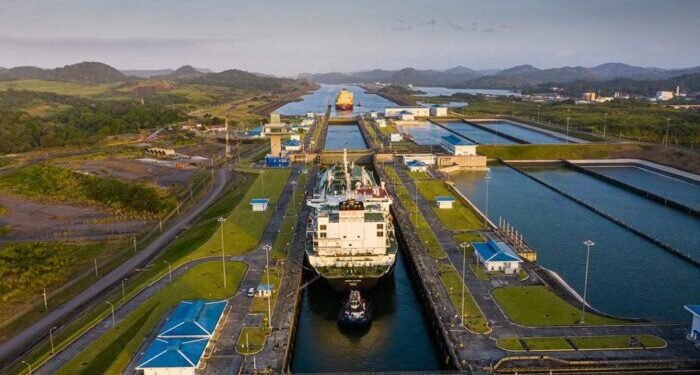Panama Canal: A Pillar of Resilience
The Panama Canal, a lifeline for global maritime trade, faced operational hurdles in 2024 due to extreme drought conditions.
- The reduction in water levels impacted transits, forcing the Canal to limit ship draughts and adjust passage schedules.
- Despite the disruptions, the Panama Canal Authority reported revenues of $4.99 billion for FY 2024, a 1% increase over the previous year, demonstrating adaptability and operational efficiency.
The review explores ongoing plans to manage climate-related challenges, including initiatives to improve water conservation and modernize operations.
Port Sector Growth and Investments
Panama’s ports experienced significant growth, driven by strategic investments and increased transshipment activities:
- Total container volume across all terminals reached 5.59 million TEUs, marking an 18.5% increase.
- Major ports, including Balboa and Manzanillo International Terminal (MIT), continue to serve as critical hubs for global trade.
Ongoing infrastructure enhancements are strengthening Panama’s position as a regional logistics gateway.
Logistics Sector: Strengthening the Hub
Panama remains a key logistics and supply chain hub for the Americas, with:
- Strategic investments in transportation infrastructure to improve connectivity.
- Government-backed initiatives promoting innovation and digital logistics platforms.
- Expansion of free trade zones and warehousing solutions, driving efficiency in cargo handling.
Panama Ship Registry: Modernization and Innovation
As the world’s largest Ship Registry, Panama continues to evolve by embracing digitalization and regulatory compliance:
- Modernized platforms are improving registration processes and fleet management.
- A focus on attracting high-value vessels ensures Panama maintains its leadership in global shipping.
Sustainability and Decarbonization
Panama is prioritizing environmental sustainability across its maritime sectors:
- The Panama Canal is targeting carbon neutrality by 2030, implementing eco-friendly technologies and alternative fuel solutions.
- Port facilities are adopting green practices to minimize emissions and improve energy efficiency.
These initiatives align Panama’s maritime sector with global decarbonization goals while enhancing its competitiveness.
Conclusion
The Panama Maritime Review 2024/2025 underscores the nation’s strategic efforts to address environmental, economic, and logistical challenges. By modernizing infrastructure, fostering innovation, and maintaining its commitment to sustainability, Panama continues to strengthen its pivotal role in global maritime trade.
Stay updated with The Logistic News for the latest insights into maritime and logistics developments worldwide.























